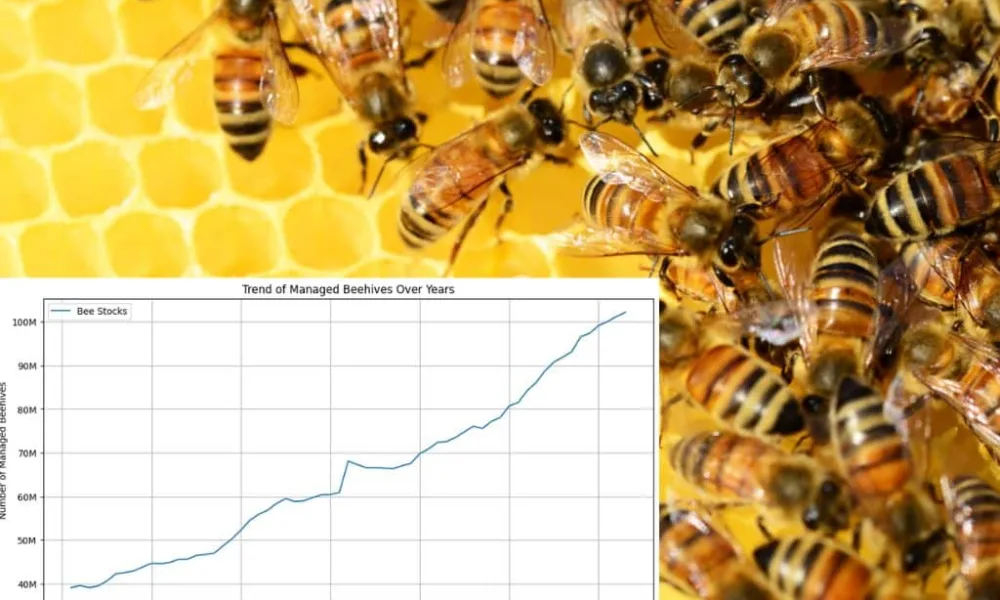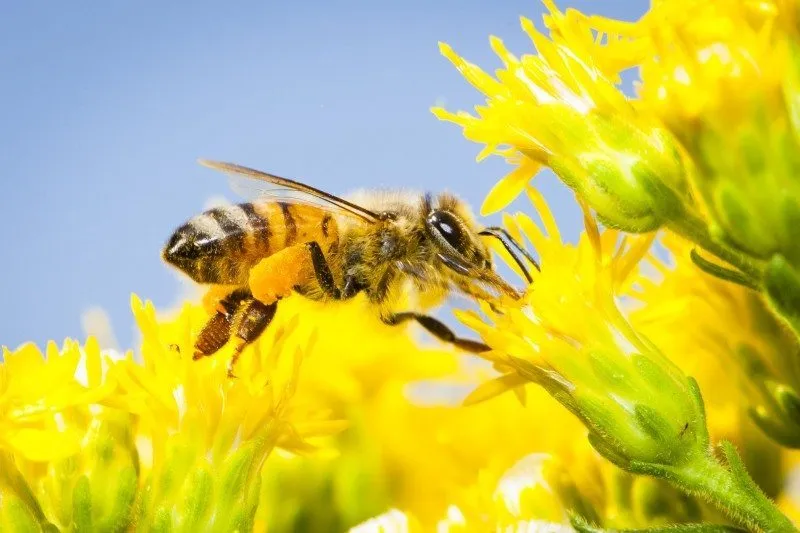For years, the decline of bee populations across the world sent shockwaves through the scientific community, farmers, and environmentalists alike. Bees — tiny yet mighty pollinators — play a vital role in sustaining the balance of life on Earth. Without them, much of our food supply, ecosystems, and biodiversity would be at risk.
But amid the worrying headlines of past years, a new story is emerging — one filled with hope, resilience, and the quiet hum of recovery. Across several regions, bee populations are making a noticeable comeback, thanks to collective conservation efforts, sustainable farming, and growing global awareness about their importance.
This isn’t just a story about insects; it’s a story about how humans can heal the planet when they care enough to act.
Table of contents
- Why Bees Matter More Than We Realize
- The Dark Period: When Bees Were Disappearing
- A Shift in Awareness
- Signs of Hope: Bee Populations Are Rebounding
- How Everyday People Are Making a Difference
- Nature’s Resilience and the Lessons It Teaches Us
- Challenges That Still Remain
- What Governments and Communities Are Doing Right
- The Emotional Side of This Comeback
- How You Can Join the Buzz
- A Brighter Future Ahead
Why Bees Matter More Than We Realize
Bees are the unsung heroes of nature’s orchestra. Every flower they visit, every seed they help fertilize, contributes to the cycle of life that sustains entire ecosystems. Scientists estimate that nearly 75% of the world’s flowering plants rely on pollinators like bees, butterflies, and birds.
In agriculture, bees are indispensable. They pollinate crops such as apples, almonds, blueberries, cucumbers, and coffee — foods that make up a significant portion of human diets. The economic value of pollination is estimated to exceed $200 billion globally each year.
Beyond economics, bees also help sustain wild plant species that support other forms of wildlife. Without them, natural habitats would suffer, and biodiversity would plummet. So, when bee populations began collapsing due to pesticide exposure, habitat loss, and disease, scientists sounded the alarm.
The decline wasn’t just an environmental issue — it was a food security crisis.
The Dark Period: When Bees Were Disappearing
Between 2006 and 2019, beekeepers and researchers reported alarming trends. Massive die-offs were occurring across North America and Europe. Entire hives vanished almost overnight — a phenomenon dubbed Colony Collapse Disorder (CCD).
The causes were complex:
- Pesticides, particularly neonicotinoids, weakened bees’ nervous systems.
- Habitat loss from urbanization and industrial agriculture reduced their food sources.
- Climate change disrupted flowering seasons, leaving bees without nectar at crucial times.
- Parasites and pathogens, such as the Varroa destructor mite, devastated colonies.
By 2015, the situation seemed dire. In the United States, beekeepers were losing an average of 40% of their colonies annually. In Europe, the decline threatened not only honey production but also the pollination of key crops.
For a while, it felt like the hum of bees might fade from the world forever.
A Shift in Awareness
Then something remarkable happened. Around the world, individuals, communities, and entire nations began taking notice. The bee became a symbol of environmental consciousness and ecological balance.
Campaigns like “Save the Bees” went viral. Schools built bee hotels; cities planted wildflower corridors; farmers began adopting bee-friendly practices. Governments started restricting harmful pesticides, and organic farming grew more popular.
People realized that helping bees wasn’t just about saving a single species — it was about protecting the interconnected web of life.
Signs of Hope: Bee Populations Are Rebounding
Now, after years of concerted effort, there’s good news to share.

1. Europe’s Bee Comeback
In parts of France, Germany, and the Netherlands, wild bee populations are showing steady recovery. Urban beekeeping initiatives in cities like Paris and Berlin have thrived, with thousands of rooftop hives now dotting cityscapes.
The European Union’s ban on neonicotinoid pesticides, implemented in 2018, has led to measurable improvements in bee health. Researchers report that colonies in these regions have higher survival rates and stronger immunity against diseases.
In Sweden, scientists noted that restored meadows and wildflower strips along farmland helped increase the diversity of wild bee species.
2. North America’s Gradual Recovery
In the United States, beekeepers are cautiously optimistic. While challenges remain, data from the Bee Informed Partnership (BIP) indicates that colony losses have stabilized over the past few years, rather than continuing to rise.
States like North Dakota and Montana, known for their vast fields of clover and alfalfa, have seen healthy bee populations, partly due to reduced pesticide use and better forage availability.
Moreover, community-driven urban projects — from pollinator gardens in New York to wildflower highways in Texas — are creating safer environments for bees to thrive.
3. New Zealand and Australia’s Strongholds
In the Southern Hemisphere, countries like New Zealand and Australia have become global leaders in beekeeping and honey production. These regions have maintained relatively stable bee populations, partly due to strict biosecurity and sustainable management practices.
New Zealand’s Manuka honey industry has also spurred interest in protecting local bee species and habitats.
4. Africa and Asia’s Resilience Story
In Kenya, the rise of beekeeping cooperatives has empowered local farmers economically while protecting native bee species. African bees, known for their resilience, are now thriving in community-managed forests and farms.
In India, the adoption of organic farming and traditional apiculture methods has helped revive indigenous bee species like Apis cerana indica. Farmers are rediscovering ancient wisdom — using natural pollinators rather than chemicals to increase crop yields.
Across China, large-scale tree-planting and reduced pesticide reliance are showing early signs of positive impact.
How Everyday People Are Making a Difference
The most inspiring part of this story is that it’s not just scientists or policymakers leading the charge — it’s regular people who decided to care.
From backyard gardeners to urban planners, the collective effort has turned into a global movement. Here’s how individuals everywhere are helping:
- Planting native flowers that bloom across seasons, ensuring bees have food year-round.
- Avoiding harmful pesticides and opting for organic alternatives.
- Building bee hotels to provide nesting spaces for solitary bees.
- Supporting local honey producers who use sustainable practices.
- Spreading awareness through schools, social media, and community workshops.
Every small act — every flower planted, every pesticide avoided — creates ripples of change.
Nature’s Resilience and the Lessons It Teaches Us
The recovery of bee populations, though partial and fragile, is proof of nature’s incredible resilience. When given a chance, ecosystems can heal themselves. Bees, in particular, show us that cooperation — both among their colonies and among humans — can lead to collective survival.
This turnaround offers a deeper message for humanity: it’s never too late to make things right. Environmental crises may seem overwhelming, but when global awareness turns into local action, transformation happens.
Challenges That Still Remain
While these positive developments are worth celebrating, experts caution against complacency. Bees are recovering, but their ecosystems remain under pressure.
Key ongoing challenges include:
- Climate change, which continues to alter flowering cycles and habitat availability.
- Monoculture farming, which limits food variety for pollinators.
- Industrial pollution and air contaminants that affect bees’ navigation and health.
- The spread of invasive species and pathogens that threaten fragile colonies.
In other words, the work isn’t done — but it’s working.
The hope lies in consistency. Continued investment in sustainable agriculture, habitat restoration, and education will be essential to ensure this recovery endures for generations to come.
What Governments and Communities Are Doing Right
Several regions offer inspiring models of what can be done when policy aligns with environmental action.
🇫🇷 France
France became the first country to ban all five major neonicotinoid pesticides linked to bee deaths. The country has also introduced bee highways — connected routes of vegetation that allow pollinators to travel safely between green spaces.
🇨🇦 Canada
Canada has introduced “pollinator-friendly certifications” for farms and businesses, rewarding those that provide safe habitats for bees. Urban areas like Toronto have also created bee sanctuaries in public parks.
🇳🇴 Norway
Oslo established the world’s first “bee highway” — a continuous corridor of rooftop gardens, green balconies, and meadows connecting pollinator-friendly zones across the city.
🇮🇳 India
Indian states like Sikkim, which banned chemical fertilizers and pesticides, have reported a resurgence in native bee populations — proving that organic farming benefits both people and pollinators.
The Emotional Side of This Comeback
There’s something deeply moving about watching bees return to bloom-filled meadows. Their presence is more than a biological indicator — it’s a symbol of hope, patience, and the quiet power of renewal.
When we see bees hovering from flower to flower, we are reminded that healing doesn’t happen overnight. It requires time, persistence, and community.
Just like the bees themselves, humanity thrives when it works together.
How You Can Join the Buzz
You don’t need to be a scientist or farmer to make a difference. Here’s how you can play a part in continuing this hopeful trend:
- Grow wildflowers in your balcony or garden — native species like lavender, sunflowers, and marigolds attract pollinators.
- Avoid pesticides — even “harmless” insect sprays can disorient bees.
- Buy organic and local produce — it supports sustainable farmers.
- Educate others — share facts, host workshops, or simply talk about bees.
- Support reforestation and conservation efforts — healthy forests mean healthier pollinators.
By making small, consistent choices, we can ensure that bees — and all they represent — continue to thrive.
A Brighter Future Ahead
Today, there’s reason to feel optimistic. From Africa to Europe, from farms to city rooftops, the gentle hum of bees is returning. Their resilience mirrors our own — a reminder that even in times of loss, renewal is always possible.
The story of global bee recovery proves one timeless truth: when humanity works with nature, not against it, healing follows.
Every flower that blooms, every hive that thrives, and every bee that buzzes carries a message of hope. It’s nature whispering that balance can be restored — if we continue to care.
So the next time you see a bee hovering near a flower, pause for a moment. Watch its quiet determination. Feel the gratitude for this tiny creature that makes life on Earth flourish.
Because in that small moment, you’ll realize something powerful:
the planet is healing — one buzz at a time.
